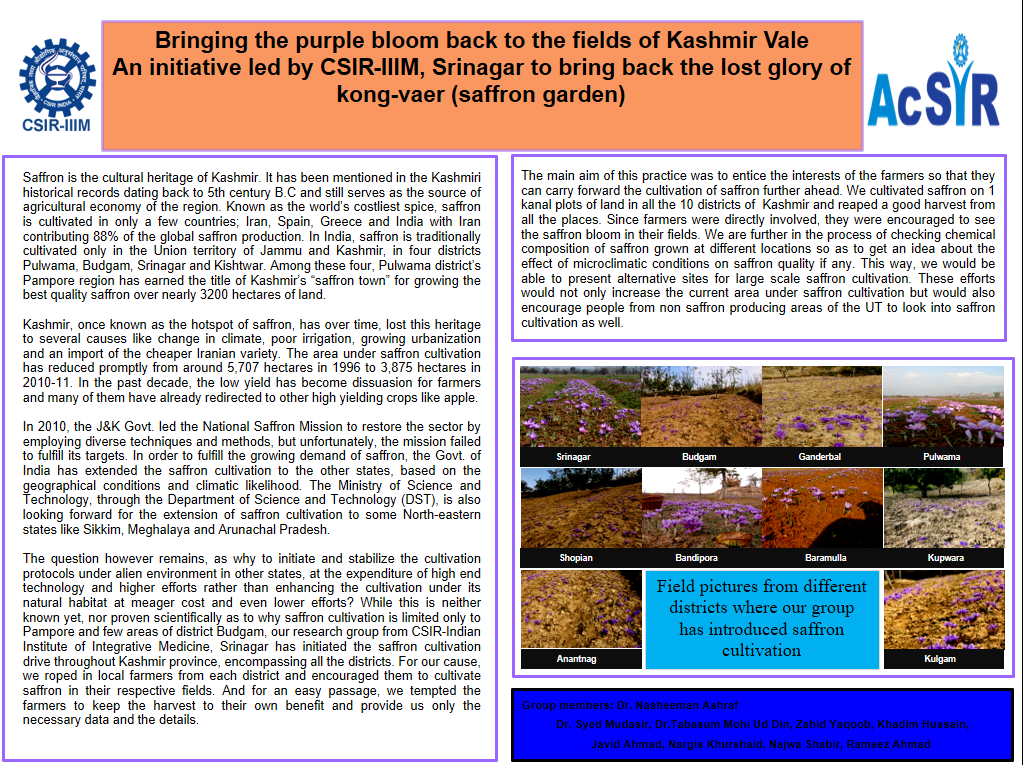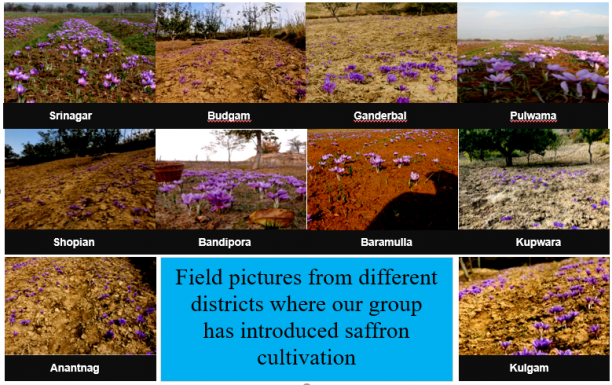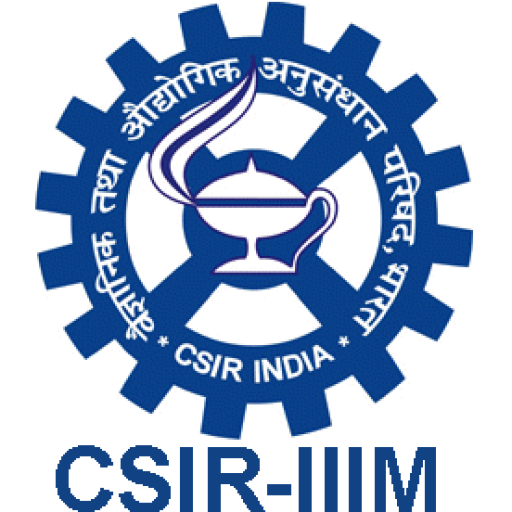
Saffron is the cultural heritage of Kashmir. It has been mentioned in the Kashmiri historical records dating back to 5th century B.C and still serves as the source of agricultural economy of the region. Known as the world’s costliest spice, saffron is cultivated in only a few countries; Iran, Spain, Greece and India with Iran contributing 88% of the global saffron production. In India, saffron is traditionally cultivated only in the Union territory of Jammu and Kashmir, in four districts Pulwama, Budgam, Srinagar and Kishtwar. Among these four, Pulwama district’s Pampore region has earned the title of Kashmir’s “saffron town” for growing the best quality saffron over nearly 3200 hectares of land.
Kashmir, once known as the hotspot of saffron, has over time, lost this heritage to several causes like change in climate, poor irrigation, growing urbanization and an import of the cheaper Iranian variety. The area under saffron cultivation has reduced promptly from around 5,707 hectares in 1996 to 3,875 hectares in 2010-11. In the past decade, the low yield has become dissuasion for farmers and many of them have already redirected to other high yielding crops like apple.
In 2010, the J&K Govt. led the National Saffron Mission to restore the sector by employing diverse techniques and methods, but unfortunately, the mission failed to fulfill its targets. In order to fulfill the growing demand of saffron, the Govt. of India has extended the saffron cultivation to the other states, based on the geographical conditions and climatic likelihood. The Ministry of Science and Technology, through the Department of Science and Technology (DST), is also looking forward for the extension of saffron cultivation to some North-eastern states like Sikkim, Meghalaya and Arunachal Pradesh.
The question however remains, as why to initiate and stabilize the cultivation protocols under alien environment in other states, at the expenditure of high end technology and higher efforts rather than enhancing the cultivation under its natural habitat at meager cost and even lower efforts? While this is neither known yet, nor proven scientifically as to why saffron cultivation is limited only to Pampore and few areas of district Budgam, our research group from CSIR-Indian Institute of Integrative Medicine, Srinagar has initiated the saffron cultivation drive throughout Kashmir province, encompassing all the districts. For our cause, we roped in local farmers from each district and encouraged them to cultivate saffron in their respective fields. And for an easy passage, we tempted the farmers to keep the harvest to their own benefit and provide us only the necessary data and the details.
The main aim of this practice was to entice the interests of the farmers so that they can carry forward the cultivation of saffron further ahead. We cultivated saffron on 1 kanal plots of land in all the 10 districts of Kashmir and reaped a good harvest from all the places. Since farmers were directly involved, they were encouraged to see the saffron bloom in their fields. We are further in the process of checking chemical composition of saffron grown at different locations so as to get an idea about the effect of microclimatic conditions on saffron quality if any. This way, we would be able to present alternative sites for large scale saffron cultivation. These efforts would not only increase the current area under saffron cultivation but would also encourage people from non saffron producing areas of the UT to look into saffron cultivation as well.
Group members: Dr. Nasheeman Ashraf
Dr. Syed Mudasir, Dr.Tabasum Mohi Ud Din, Zahid Yaqoob, Khadim Hussain,
Javid Ahmad, Nargis Khurshaid, Najwa Shabir, Rameez Ahmad
 Screen Reader Access
Screen Reader Access

